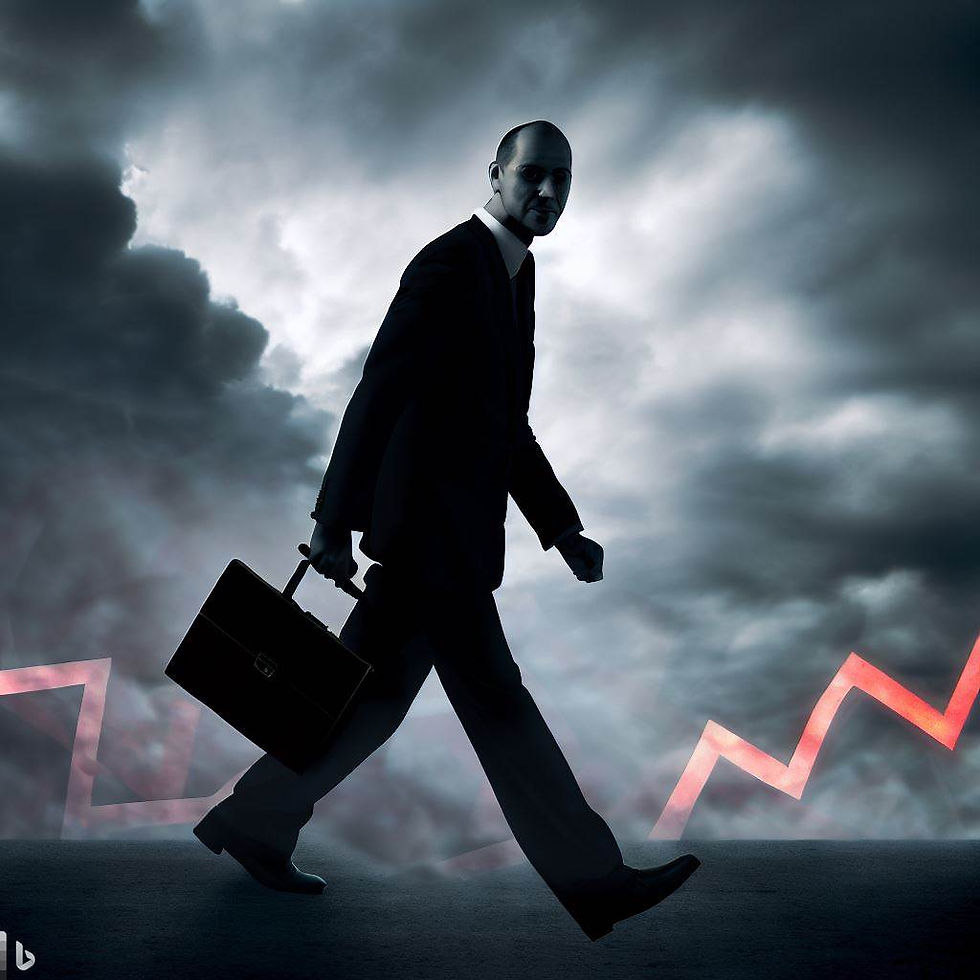Leading Recession Indicators: A Guide for Investors
- Aki Kakko

- Aug 26, 2023
- 2 min read
Updated: Feb 11, 2024
Understanding leading indicators of a recession is crucial for investors looking to protect their portfolios and potentially benefit from changing economic conditions. Recognizing these signs early can provide an advantage in shifting investment strategies in preparation for downturns. This article will delve into some of the most prominent leading indicators that signal a potential recession. We'll also discuss real-world examples of how these indicators have performed before past recessions.

Yield Curve Inversions
The yield curve plots interest rates of bonds with differing time horizons. Normally, long-term bonds have a higher yield than short-term bonds. However, when short-term interest rates surpass long-term rates, the yield curve inverts. An inverted yield curve can indicate that investors are anticipating lower growth in the future, leading them to demand higher yields for short-term investments compared to long-term ones. Example: Prior to the 2008 financial crisis, the U.S. Treasury yield curve inverted in late 2006. This signaled increasing investor pessimism about future economic growth, and a recession followed shortly thereafter.
Declining Business and Consumer Confidence
Surveys and indexes that gauge the sentiment and expectations of businesses and consumers about the economy's future. Declining confidence can result in decreased spending and investment, which can slow economic growth. Example: Leading up to the 2001 recession in the U.S., both the Consumer Confidence Index and the National Federation of Independent Business's small business optimism index saw significant declines.
As unemployment rises, consumer spending generally decreases, leading to further economic slowdowns. Example: In the months leading up to the 2008 recession, the U.S. unemployment rate started trending upwards, moving from around 4.4% in 2007 to over 6% in 2008.
Decreasing Industrial Production
A measure of the output of the manufacturing, mining, and utilities sectors. A consistent drop in industrial production can signal that businesses anticipate decreased demand for their products. Example: Prior to the 1990-1991 recession, U.S. industrial production showed a consistent downward trend, signaling weakening economic conditions.
Falling Retail Sales
Retail sales are a direct reflection of consumer sentiment. A decline suggests consumers are tightening their belts, often in anticipation or fear of worsening economic conditions. Example: In the months preceding the 2008 global financial crisis, retail sales in the U.S. began to decline, marking a reduction in consumer confidence and spending.
Housing Market Slowdown
Measures such as declining home sales, falling housing starts, or increasing mortgage delinquencies. The health of the housing market can have a ripple effect on the broader economy, affecting construction jobs, mortgage banking, and consumer spending. Example: The burst of the U.S. housing bubble in 2006-2007, characterized by plummeting housing prices and rising mortgage defaults, was a precursor to the 2008 financial crisis.
It's important to note that no single indicator can predict recessions with complete accuracy. However, by keeping a close watch on a combination of these leading indicators, investors can be better prepared to adjust their strategies in the face of changing economic winds. Being informed and flexible is key in navigating the often-unpredictable waters of the global economy.




Comentários